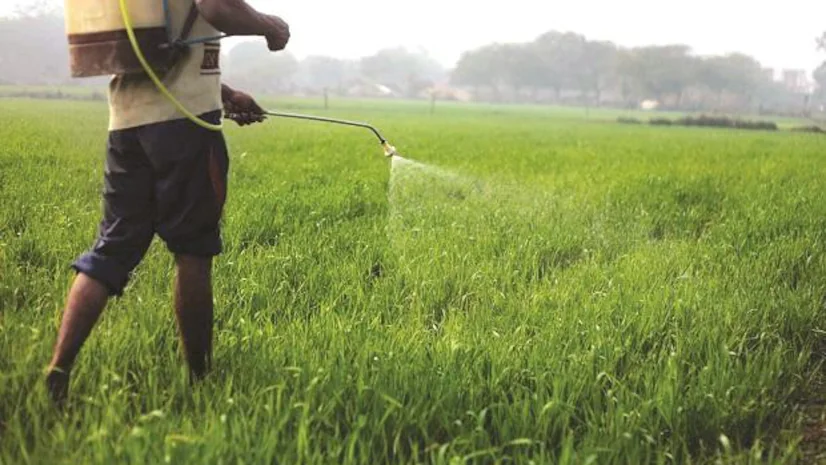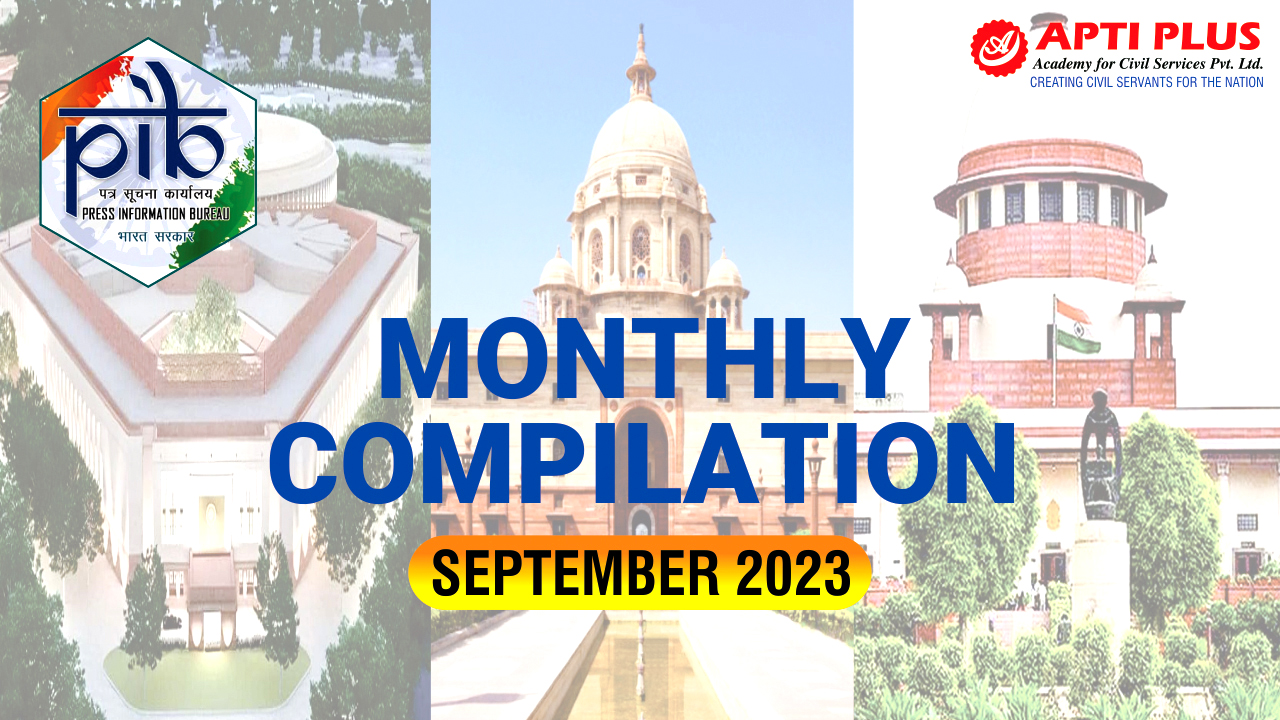
Copyright infringement not intended
Picture Courtesy: www.business-standard.com
Context: The Indian government has approved a subsidy of ₹22,303 crore for Phosphatic and Potassic (P&K) fertilizers for the Rabi season from 1st October 2023 until 31 March 2024. This subsidy is aimed at supporting farmers by ensuring the availability of essential fertilizers at affordable prices.
Details
- The subsidy rates for different types of fertilizers are as follows:
- Nitrogen: ₹47.2 per Kg
- Phosphorus: ₹20.82 per Kg
- Potash: ₹2.38 per Kg
- Sulphur: ₹1.89 per Kg
- The subsidy on Di-ammonium phosphate (DAP) will continue at ₹4500 per ton, and DAP will be available at ₹1350 per bag based on the old rate. The NPK fertilizer will be available at the price of ₹1470 per bag.
- By subsidizing these essential fertilizers, the government aims to shield Indian farmers from the impact of rising international prices and ensure their continued access to these vital agricultural inputs.
Fertilizer Subsidy
- Fertilizers are essential inputs for enhancing the productivity and profitability of agriculture. However, fertilizers are also costly and often unaffordable for small and marginal farmers. Therefore, the government provides subsidies for fertilizers to make them accessible and affordable for farmers.
- A fertilizer subsidy is a financial support provided by the government to the agricultural sector for the purchase of fertilizers. In India, agriculture is a vital sector employing a significant portion of the population.
Background of Fertilizer Subsidy in India
- The fertilizer subsidy in India has a long history, dating back to the 1960s when the Green Revolution was launched to boost food production and self-sufficiency.
- Initially, the subsidy was given to the fertilizer industry to encourage domestic production and reduce import dependence. Later, the subsidy was shifted to the consumers, i.e., the farmers, to reduce the burden of high fertilizer prices.
- The fertilizer subsidy in India has two components: urea subsidy and nutrient-based subsidy (NBS). Urea is the most widely used nitrogenous fertilizer in India, accounting for about 80% of the total consumption. Urea is sold at a statutorily notified uniform maximum retail price (MRP).
- The Nutrient Subsidy (NBS) scheme was introduced in 2010 to replace the earlier administered pricing system for decontrolled phosphatic and potassic (P&K) fertilizers. Under the NBS scheme, the government fixes a per kg subsidy rate for each nutrient, i.e., nitrogen (N), phosphorus (P), potash (K) and sulphur (S), based on their nutrient content, international and domestic prices and exchange rate.
- The manufacturers/importers/marketers are free to decide the MRP of P&K fertilizers at reasonable levels. The subsidy is paid to them on receipt of fertilizers in district warehouses.
Key features of the fertilizer subsidy
- The fertilizer subsidy is one of the largest subsidies given by the central government, accounting for about 10% of its total expenditure on subsidies.
- It is also one of the most volatile subsidies, as it depends on various factors such as international prices, exchange rates, domestic demand and supply, etc.
- It is highly skewed towards urea, which accounts for about 70% of the total subsidy, while P&K fertilizers account for about 30%. This creates an imbalance in the use of NPK nutrients, leading to soil degradation and low crop response.
- The government provides subsidies either directly to farmers or fertilizer manufacturers. This direct support aims to reduce the overall cost of fertilizers for farmers, making them more affordable and accessible.
- Subsidies play a crucial role in stabilizing fertilizer prices. By reducing the cost burden on farmers, subsidized fertilizers become more affordable, ensuring price stability. This stability is essential for farmers' financial planning and agricultural productivity.
- The government regulates both the distribution and pricing of fertilizers. Regulation helps prevent hoarding and black marketing, ensuring that subsidized fertilizers reach the farmers without market distortions.
Significance of Fertilizer Subsidy
- The fertilizer subsidy has played a crucial role in enhancing food security and agricultural growth in India by increasing crop yields and reducing dependence on imports.
- It has contributed to poverty reduction and rural development by improving farm incomes and the livelihoods of millions of farmers.
- It has helped to maintain macroeconomic stability by reducing the fiscal deficit and current account deficit through lower imports and higher exports of agricultural commodities.
- It has supported the domestic fertilizer industry by providing incentives for production, investment and innovation.

Impact of Fertilizer Subsidy
|
Fiscal Impact
|
●The fertilizer subsidy puts immense pressure on the government's finances, as it accounts for about 0.7% of GDP. This strain can lead to fiscal deficits, impacting overall economic stability.
●Often, the actual subsidy payout surpasses the budgeted amount due to various factors, causing fiscal slippages. This can lead to unplanned expenditures and financial instability.
●The heavy allocation to fertilizer subsidies can crowd out investments in crucial sectors like irrigation, research, and agricultural extension services. This affects the overall development of the agricultural sector.
|
|
Economic Impact
|
●Subsidies can distort market prices by artificially lowering the cost of fertilizers. This distortion affects the efficient allocation of resources, leading to imbalances in supply and demand in the agricultural sector.
●Subsidies can create inefficiencies in the market by encouraging smuggling, adulteration, and hoarding. These activities disrupt the market equilibrium and hinder fair competition.
●Heavy subsidies can discourage innovation in fertilizers and related technologies. The lack of competition due to subsidized products can stifle advancements in the agricultural input industry.
|
|
Social Impact
|
●The subsidy benefits large and medium-scale farmers’ more than small and marginal farmers due to better access and awareness. This creates disparities among farmers, exacerbating existing social inequalities.
●While subsidies reduce input costs for farmers, they can increase food prices for consumers. This occurs as farmers, facing lower input costs, might not reduce the prices of their produce, leading to inflated food prices.
|
|
Environmental Impact
|
●Excessive use of certain fertilizers, especially urea, can lead to soil degradation, reducing soil fertility and productivity in the long term.
●Overemphasis on certain types of fertilizers due to subsidies can create nutrient imbalances in the soil, adversely affecting crop health and yield.
●Runoff and leaching of excess fertilizers contaminate water bodies, leading to water pollution. This can harm aquatic life and impact human populations reliant on these water sources.
●Certain fertilizers release greenhouse gases such as nitrous oxide, contributing to climate change and environmental degradation.
|
Steps Taken to Reform Fertilizer Subsidy
- Introducing the Nutrient Based Subsidy (NBS) scheme in 2010 to rationalize the subsidy on P&K fertilizers and encourage balanced use of nutrients.
- Implementing the neem coating of urea in 2015 to improve the efficiency and effectiveness of urea and reduce its diversion and black marketing.
- Launching the direct benefit transfer (DBT) system for fertilizer subsidy in 2018 to ensure timely and transparent payment of subsidy to the manufacturers/importers based on actual sales to farmers through point of sale (PoS) devices.
- Increasing the subsidy rates for NBS nutrients in 2021 and 2022 to ensure adequate availability and affordable prices for farmers despite the uptrend in the international market.
- Converting the existing village, block/sub-district/taluk and district-level fertilizer retail outlets into model fertilizer retail outlets called Pradhan Mantri Kisan Samridhi Kendra (PMKSK) to act as “one-stop shop” for all agriculture-related inputs and services.
Challenges and Considerations in Fertilizer Subsidy Policies
- The fertilizer subsidy issue is highly sensitive politically due to its impact on a significant voter base, primarily comprising farmers. Attempts to reduce or restructure the subsidy face vehement resistance from stakeholders, including farmers, industry players, and politicians.
- The fertilizer subsidy system involves multiple complex processes such as production, import, distribution, and quality control. However, existing institutions suffer from deficiencies like data gaps, lack of transparency, and accountability, hindering effective coordination among these processes.
- Generous fertilizer subsidies have fostered a dependency among farmers, making them accustomed to inexpensive fertilizers. Shifting their behaviour towards judicious fertilizer use requires extensive efforts in awareness, education, and providing incentives for adopting optimal practices.
- Subsidy benefits primarily favour large and medium-scale farmers, leaving small and marginal farmers at a disadvantage due to limited availability and distribution challenges.
- The current subsidy system promotes overuse and misuse of fertilizers, causing environmental issues like water pollution, greenhouse gas emissions, and soil health deterioration, necessitating a shift towards eco-friendly practices.
- The subsidy disproportionately benefits states with higher irrigation coverage, neglecting rainfed and backward regions, thereby creating regional imbalances in agricultural development.
- The provision of subsidies exerts a significant financial burden on the government, impacting fiscal stability and necessitating careful budgetary considerations.
Way Forward to Reform Fertilizer Subsidies in India
- A phased reduction of urea subsidy by aligning its price with market value, easing the fiscal burden, encouraging balanced nutrient use, and curbing environmental degradation.
- Precision targeting of subsidies to small and marginal farmers based on factors such as landholding size, income, and cropping patterns. This approach minimizes leaks, promotes equity, and ensures social welfare enhancement.
- Shifting from product-centred subsidies to income-based support by directly transferring funds to eligible farmers' bank accounts. This empowers farmers to choose inputs according to their specific needs and preferences, fostering flexibility.
- Reallocating funds into vital public goods like irrigation systems, research and development, extension services, and market connections. These investments enhance overall agricultural productivity, profitability, and sustainability.
- Utilizing technology-driven solutions to precisely target subsidies for small and marginal farmers, ensuring that the support reaches those who need it the most efficiently.
- Investing in research endeavours to develop fertilizers that are not only efficient and cost-effective but also environmentally friendly, aligning with sustainable agricultural practices.
- Conducting comprehensive training programs and workshops to educate farmers about the judicious use of fertilizers. This knowledge empowers them to optimize fertilizer application, leading to improved crop yields and reduced environmental impact.
- Actively promoting organic farming techniques and sustainable agricultural practices. By reducing reliance on chemical fertilizers, this approach fosters environmental conservation and ensures long-term soil fertility.
- Engaging in collaborations with other nations to learn from their successful fertilizer management practices. International cooperation facilitates the exchange of knowledge and expertise, enabling India to implement effective strategies and policies.

Conclusion
- The fertilizer subsidy in India is vital for agriculture and food security but poses challenges to fiscal health, economic efficiency, social equity, and environmental sustainability. A balanced and ongoing reform is essential to enhance its effectiveness, efficiency, and fairness.
Must Read Articles:
FERTILIZER SUBSIDY: https://www.iasgyan.in/daily-current-affairs/fertilizer-subsidy
UREA UNDER NBS REGIME: https://www.iasgyan.in/daily-current-affairs/urea-under-nbs-regime#:~:text=In%202021%2D22%2C%20the%20government,as%20agricultural%20research%20and%20infrastructure.
|
PRACTICE QUESTION
Q. What are the key challenges faced by India in managing its fertilizer subsidy, considering its impact on fiscal health, economic efficiency, social equity, and environmental sustainability, and what reforms are being implemented to address these issues?
|




